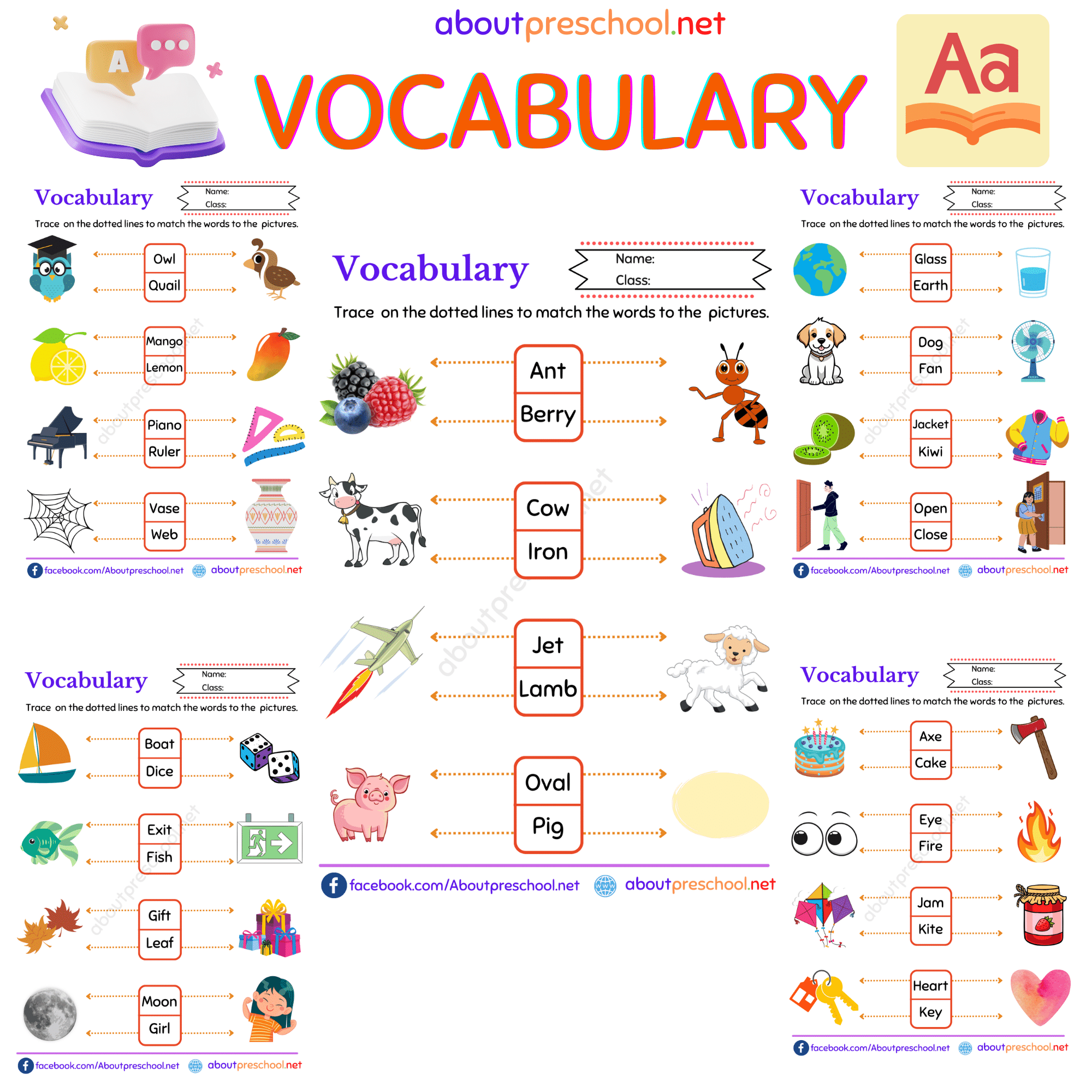Kindergarten is an exciting time for young children as they begin to learn and develop their language skills. One important aspect of this development is building a strong vocabulary. By introducing kindergarten vocabulary words with pictures, children can easily grasp the meaning of new words and expand their language abilities.
Using visual aids such as pictures can help children make connections between words and their meanings. This can enhance their understanding and retention of new vocabulary words. It also makes learning more engaging and fun for young learners.
Kindergarten Vocabulary Words with Pictures
1. Animals: Children love learning about different animals. Introduce words like “cat,” “dog,” “bird,” and “fish” with corresponding pictures to help them identify and remember each animal.
2. Colors: Teach children the names of various colors such as “red,” “blue,” “yellow,” and “green” using colorful pictures. This will help them associate each color with its name.
3. Shapes: Introduce basic shapes like “circle,” “square,” “triangle,” and “rectangle” with visual aids. This will help children recognize and differentiate between different shapes.
4. Numbers: Help children learn numbers from 1 to 10 with pictures representing each numeral. This will assist them in counting and recognizing numbers in everyday objects.
5. Fruits and Vegetables: Teach children the names of common fruits and vegetables like “apple,” “banana,” “carrot,” and “broccoli” using pictures. This will encourage healthy eating habits and expand their vocabulary.
By incorporating pictures into kindergarten vocabulary lessons, teachers can create a more interactive and engaging learning experience for young children. Visual aids not only help children retain new words better but also make learning fun and exciting. Encouraging children to use these words in everyday conversations can further reinforce their vocabulary skills.
Overall, introducing kindergarten vocabulary words with pictures is a great way to enhance language development in young children. By making learning interactive and enjoyable, children are more likely to retain new words and use them confidently in their everyday communication.
